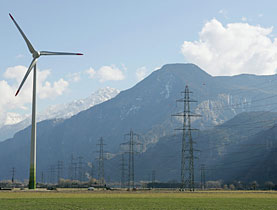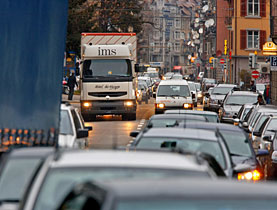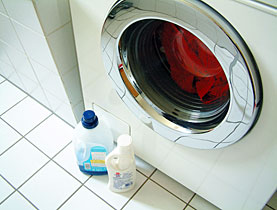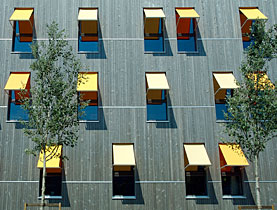Experts call for sharp cut to CO2 emissions

Scientists at Zurich's Federal Institute of Technology say carbon emissions should be slashed to one ton per capita annually to help combat global warming.
They said achieving this ambitious goal – Swiss levels currently stand at more than six tons per capita of carbon dioxide – would involve the three Es: increased efficiency, renewable energy and electricity.
For the past year, researchers at the federal institute’s Energy Science Centre have been considering ways of countering the ongoing rise of global temperatures and stabilising temperatures so that they do not rise any higher than 1.5 degrees Celsius in the future.
Presenting their strategy paper on the issue at a conference in Zurich on Monday, scientists said the only way of reaching this target would be to limit CO2 emissions to one ton per person per year by the end of the century – if the planet’s population increases to ten billion as foreseen.
This does not mean limiting energy consumption as such, but rather reconsidering what type of energy is used.
“The primary goal is to reduce CO2 emissions and you can do this with the help of renewable energies. It means carbon-free energy is important and not consumption per se,” said the federal institute’s president Ralph Eichler.
The Zurich researchers propose meeting what they admit is an ambitious goal by following a three-part E strategy.
Three Es
“The three pillars are: increased efficiency of energy conversion at all steps of the supply chain, the rapid introduction of renewable energies, and the increased consumption of electricity at the end-user level,” said Konstantinos Boulouchos, a member of the energy centre’s steering committee.
The first priority for the Zurich researchers is the development of renewable energies, but they are already warning that it will be some time before they represent 30 to 50 per cent of the energy mix, up from 15 per cent worldwide today.
“Renewable energies aren’t very reliable either because you can’t store them,” Boulouchos told swissinfo.
“The hope is that in the second half of the century renewables will dominate, but until then we have to bridge the gap, so fossil fuels or nuclear power plants will probably have to be an intermediate solution for the next 30 to 50 years,” he said.
Maritime shipping and air transport for example may have no viable alternatives to fossil fuels in the foreseeable future.
Electricity’s role
Increasing energy efficiency would affect every link of the energy conversion chain, from extraction at the energy source, through storage and distribution, to usage.
The third pillar, electrification, is considered the backbone of a sustainable energy system. Researchers said electricity produced with little in the way of CO2 emissions would be used more and more for heating and cooling as well as for individual mobility, such as electric cars.
The federal institute says the one-ton strategy, although ambitious, is a long-term project for the next 50 years and beyond.
“Realistic or not, it’s a goal that we have to reach,” Eichler told swissinfo. “It will take time, but it could be reached by the end of the century… if we take the first step immediately.”
Scientists also warn that it cannot be left to consumers alone to decide whether to cut their carbon emissions.
“There is a need for political will,” added Eichler. “This target will have to be imposed, but we will have to present technology that is economical so that the population will be ready to accept it.”
swissinfo, Scott Capper in Zurich
Carbon dioxide (CO2) is one of the major gases responsible for the greenhouse effect and global warming. In Switzerland it represents around 80% of harmful emissions.
The other gases include methane, nitrous oxide and hydrocarbons.
Despite ambitious emission targets, greenhouse gas emissions have actually risen by 0.4% in Switzerland since 1990.
Ongoing energy projects at Zurich’s Federal Institute of Technology include carbon sequestration for fossil-fuelled power stations. This would involve in this case mineralising the CO2 by combining it with solid substances.
Another research group is looking at how to make so-called power electronics smaller and more efficient – components used today in hybrid vehicles. By improving the controls of these cars’ drive system, they become more environmentally friendly.
Another way of cutting CO2 emissions is to renovate buildings with new types of wall insulation and by installing heat pumps. This combination would seriously cut into, if not eliminate, a home’s carbon emissions, for a cost comparable to that of a mid-sized car.

In compliance with the JTI standards
More: SWI swissinfo.ch certified by the Journalism Trust Initiative



You can find an overview of ongoing debates with our journalists here. Please join us!
If you want to start a conversation about a topic raised in this article or want to report factual errors, email us at english@swissinfo.ch.